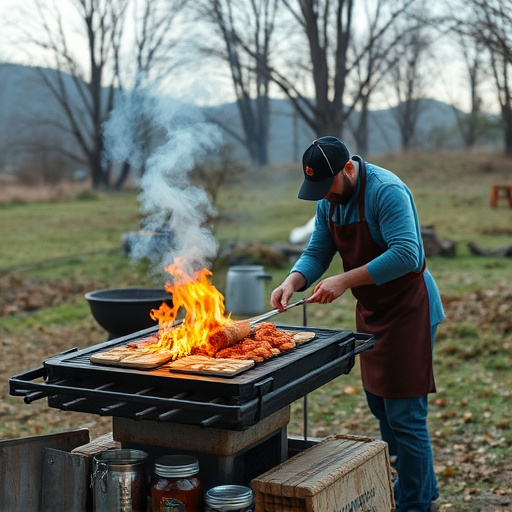Achieving perfect pulled pork involves the 'low and slow' cooking technique, transforming tough cuts of pork shoulder into tender, flavorful meat. Choose well-marbled cuts like boneless packer shoulders or bone-in whole/half shoulders. Season with marinades and rubs for balanced flavors. Cook at 225°F – 275°F (107°C – 135°C) for 8-10 hours to break down collagen. Use two forks to shred the meat, locking in juices. Serve creatively: sandwiches, pasta, tacos, burritos, or dumplings. Store leftovers in airtight containers for up to 4 days in the fridge or freeze for up to 3 months. Reheat gently on the stovetop or in the oven to maintain tender quality, avoiding microwaving.
Unleash the secret to the most tender, mouthwatering pulled pork BBQ recipes—all thanks to the magic of low and slow cooking. This comprehensive guide takes you on a journey from choosing the perfect cut of meat to mastering the art of seasoning, temperature control, and effortless shredding techniques. Learn how to transform a simple shoulder into a smoky, flavorful masterpiece, complete with creative serving suggestions and tips for storing your delicious leftovers.
- Understanding Pulled Pork: The Art of Low and Slow Cooking
- Choosing the Right Cut of Meat for Tender Pulled Pork
- Seasoning Basics: Marinades and Rubs for Flavorful Pork
- Setting Up Your Smoker or Oven for the Perfect Temperature
- The Slow Cooker Method: A Step-by-Step Guide to Succulent Pulled Pork
- Techniques for Pulling and Shredding the Meat Effortlessly
- Serving Suggestions: Creative Ways to Enjoy Your Pulled Pork BBQ
- Tips for Storing and Reheating Leftover Pulled Pork
Understanding Pulled Pork: The Art of Low and Slow Cooking
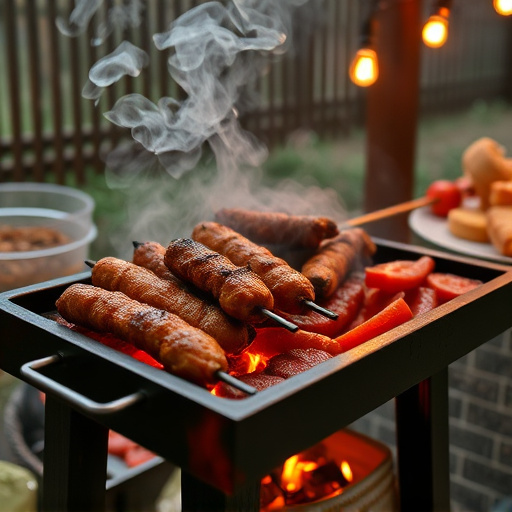
Pulled pork, a classic comfort food and favorite among BBQ enthusiasts, is achieved through a meticulous process known as low and slow cooking. This technique is an art that transforms tough cuts of pork into tender, juicy shreds that melt in your mouth. The secret lies in breaking down the muscle fibers over extended periods, allowing the meat to become incredibly soft and flavorful.
When preparing a pulled pork BBQ recipe, time is your ingredient. Slow-cooking at lower temperatures for several hours ensures the collagen in the meat breaks down, resulting in a melt-in-your-mouth texture. This method also allows the rich flavors of the marinade or BBQ sauce to penetrate deep into the meat, creating a symphony of taste that defines the ultimate pulled pork experience.
Choosing the Right Cut of Meat for Tender Pulled Pork
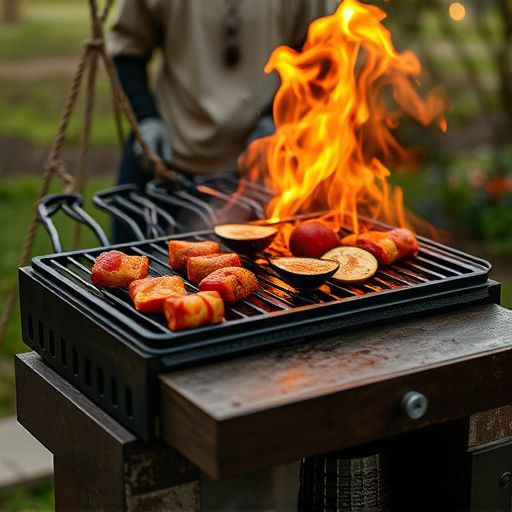
When crafting the perfect pulled pork BBQ recipe, selecting the appropriate cut of meat is a fundamental first step. Look for a well-marbled shoulder or butt section—these cuts are rich in connective tissues, which break down during low and slow cooking, resulting in tender, succulent meat. Avoid lean cuts like the loin; while they may cook quickly, they lack the necessary fat to keep the pork moist and flavorful throughout the process.
Opting for a boneless, packer-cut shoulder is a popular choice among BBQ enthusiasts. This cut is packed with flavor and tends to remain juicy even after hours of slow cooking. Alternatively, bone-in cuts like the whole shoulder or half-shoulder can offer rich, smoky flavors but may require additional planning for serving. Remember, the key to tender pulled pork lies in patience; allowing the meat to cook slowly enables the collagen in the connective tissues to melt, transforming it into delicious, pull-apart meat.
Seasoning Basics: Marinades and Rubs for Flavorful Pork
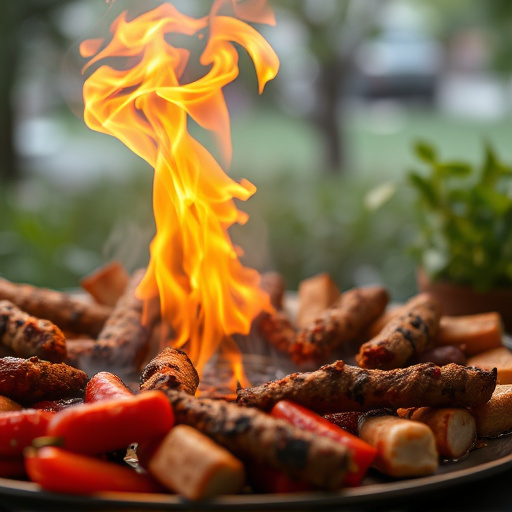
When it comes to seasoning pulled pork for a mouthwatering BBQ recipe, the key lies in balancing flavors through marinades and rubs. Marinades, rich in acids like vinegar or citrus juices, soften the meat’s fibers over time, enhancing its overall tenderness. They also help penetrate spices, ensuring every bite is packed with flavor. Acids work synergistically with rubs—blends of spices, herbs, and salts—to create a complex taste profile.
Rubs are essential for adding depth and warmth to pulled pork BBQ recipes. Coarsely ground spices like black pepper, paprika, garlic powder, and brown sugar stick to the meat’s surface, creating a delicious crust. These rubs not only enhance flavor but also act as a barrier, helping to keep the pork moist during the slow-cooking process. Experimenting with different rub combinations allows for personalisation, ensuring your pulled pork stands out as the star of any BBQ gathering.
Setting Up Your Smoker or Oven for the Perfect Temperature
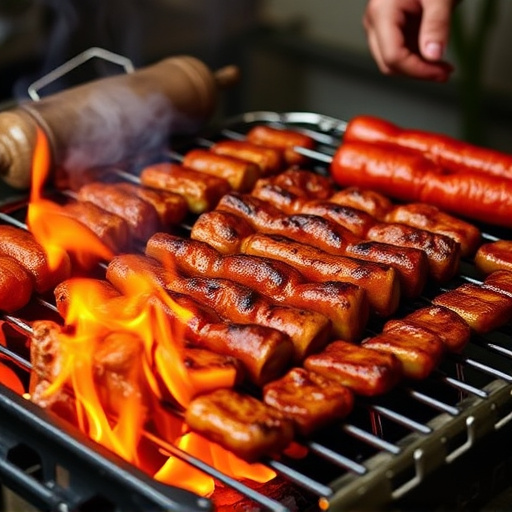
To achieve that perfect, melt-in-your-mouth texture in your pulled pork BBQ recipe, setting up your smoker or oven at the correct temperature is key. The ideal range for slow-cooking pork shoulder (the cut best suited for pulled pork) hovers around 225°F to 275°F (107°C to 135°C).
This low and slow method allows for extensive collagen breakdown, transforming tough muscle fibers into rich, tender meat. In a smoker, you’ll want to maintain consistent heat and humidity throughout the process. In an oven, preheating to the desired temperature and using a covered dish with a small amount of liquid can help regulate the cooking environment, ensuring even results.
The Slow Cooker Method: A Step-by-Step Guide to Succulent Pulled Pork
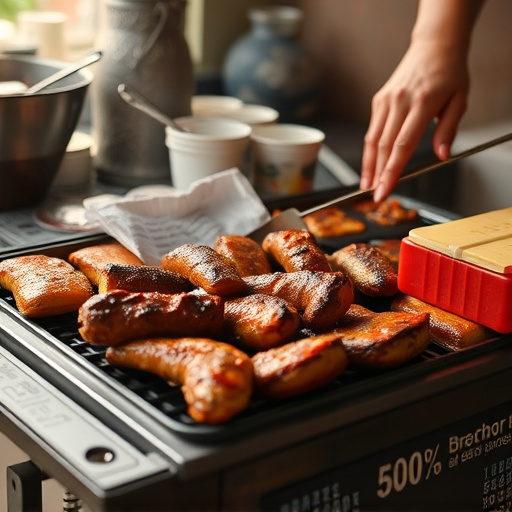
The slow cooker method is a game-changer for achieving succulent, pull-apart pulled pork BBQ. It starts with a simple process: season your pork shoulder generously with a blend of salt, pepper, and your favorite BBQ spices. Place it in the slow cooker, cover, and let it cook on low for 8 to 10 hours or high for 4 to 5 hours. This long, slow cooking time is key; it transforms tough muscle fibers into tender, shreddable meat.
During the cooking process, periodically check the meat and add a splash of your favorite BBQ sauce for extra moisture and flavor. Once cooked, remove the pork and shred it using two forks or a stand mixer fitted with a dough hook. The result is a beautifully tender, shredded pulled pork ready to be used in sandwiches, tacos, or as a side dish—a true comfort food classic.
Techniques for Pulling and Shredding the Meat Effortlessly
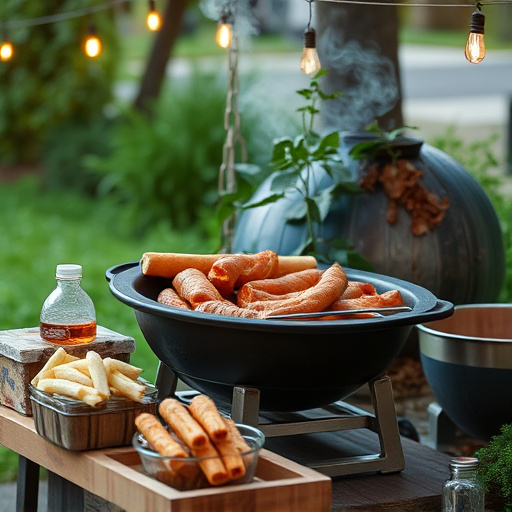
Pulling and shredding meat is an art that, with practice, can become second nature. For a pulled pork BBQ recipe, the key lies in slow cooking methods. Start by ensuring your meat is tenderized; this can be done by dry rubbing with spices or even using a tenderizer tool to break down tough muscle fibers before cooking. Once cooked low and slow until it becomes almost shreddingly tender, the real fun begins.
Use two forks to gently pull apart the cooked pork. This technique allows you to capture the rich juices within the meat, ensuring each mouthful is succulent. Practice this method with different cuts of pork to master the perfect shredded texture—it’s all about the right amount of resistance and yield.
Serving Suggestions: Creative Ways to Enjoy Your Pulled Pork BBQ
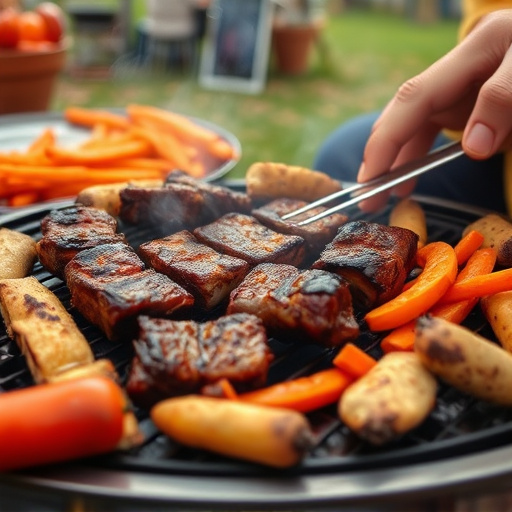
Transform your classic pulled pork BBQ into a culinary delight with these creative serving suggestions. Once you’ve perfected your low-and-slow cooking technique, it’s time to impress your taste buds and guests alike. One unique way to enjoy your tender pulled pork is by creating a gourmet sandwich; layer the juicy meat on a toasted bun, add coleslaw for a crisp texture, and drizzle with a tangy BBQ sauce for an elevated take on a traditional meal.
For a more substantial dish, consider incorporating your pulled pork into a hearty pasta. A simple mix of tender meat, roasted vegetables, and a creamy sauce will create a satisfying and comforting bowl of comfort food. This versatile meat can also be used in tacos, burritos, or even as a filling for dumplings, allowing you to experiment with different cuisines and flavors while keeping the star ingredient—your perfectly cooked pulled pork BBQ recipe—front and center.
Tips for Storing and Reheating Leftover Pulled Pork
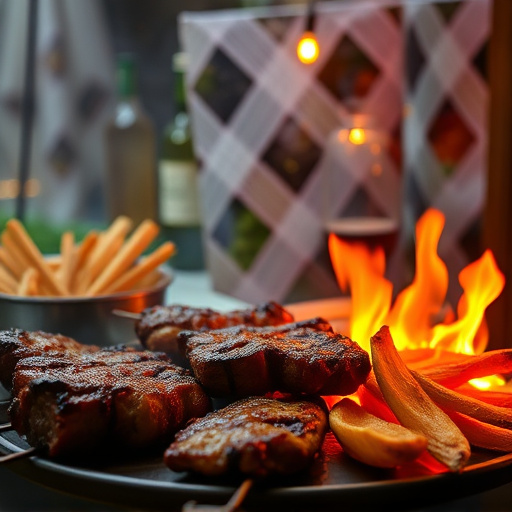
Storing Leftover Pulled Pork:
Ensure your pulled pork is properly sealed in an airtight container and refrigerated within 2-3 hours after cooking to maximize freshness. It can typically last for up to 4 days in the fridge. For longer storage, consider freezing it in smaller portions; frozen pulled pork remains safe for up to 3 months.
Reheating: When ready to enjoy again, reheat thoroughly on the stovetop or in the oven at a low temperature (around 200°F/93°C) to maintain its tender texture. Avoid microwaving, as it can cause the pork to dry out and become tough. Reheated pulled pork should reach an internal temperature of at least 145°F/63°C to ensure food safety. Perfectly reheated pulled pork makes a delicious addition to your favorite BBQ recipes or simply paired with buns for a satisfying sandwich.
